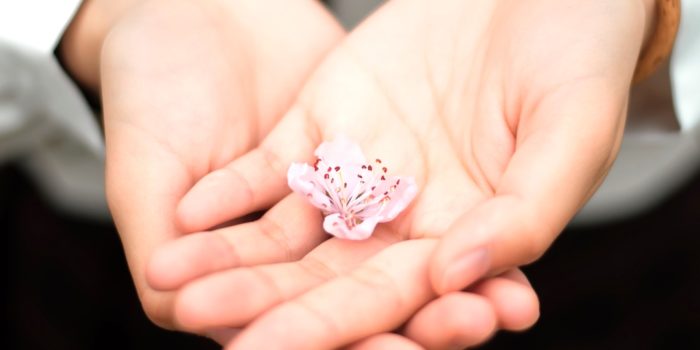
by Amy Lawson, MBA, CDFA®, RTT Practitioner®, C.Hyp
Most of us have heard it since we were old enough to hold a grudge. You get into a squabble with your sister and your mother steps in: “Stop fighting… forgive each other… it’s the right thing to do.”
YOU: “But, she didn’t say she was sorry.”
YOUR MOTHER: “Tell your sister you’re sorry.”
YOUR SISTER: “Sorry.” (As she rolls her eyes.)
MOTHER: “There, she said she was sorry, now go outside and play.”
While this is accurate for many of us, yet an over-simplified scenario, the manner in which conflict is handled in our childhood home models how we handle conflict once we leave it.
Being on the receiving end of offenses without apologies – or sincere apologies – shrouded in dysfunction, teaches us that offenders are not required to apologize, or, that they can say they’re sorry without any change in behavior, or worse, that despite your experiencing the offense, you were taught there was no offense.
If the offenses include abuse, or neglect, or even a steady stream of lies or an assortment of betrayals, it’s not so easy to forgive, especially if the offender appears charming to those who don’t live under the same roof. Your hurts run deep and the offender’s popularity with the public runs high.
Throw religion into the dysfunctional mix and you have offenders who believe their actions have biblical-backing and victims who are expected to display a Christ-like capacity to turn the other cheek in perpetuity.
Not only are you disappointing the ones who claim to love you the most by your lack of perfection, but you believe you are disappointing your creator as well. If Christ could forgive those who nailed him to the cross, surely YOU could forgive those who you repeatedly hurt you. Right?
In reality it’s not that simple because it’s not that clear. Our offenders continue to offend, while we numb our pain and grow our anger.
Anger in and of itself isn’t bad, mind you. Anger can be a shield to protect us from further hurt. And while anger will protect us from hurt, it will eventfully keep out the good as well. Anger will keep us stuck in the past, stuck in our pain. It will keep the offense fresh in our minds and the pain fresh in our bellies – it allows the offender to keep hurting us over and over again.
Granted, it’s not easy. We can feel justified in our anger and we will fight hard to hold on to it because it helped us escape a bad situation. After all, anger is more productive than despair. And, because our anger has helped us, because it has shielded us from further pain, we’re afraid to drop the shield.
We bring our old, emotional wounds, the familial scars, into our marriage, hoping love hides them from ourselves and from those we believe to be soul mates. Whether you’re contemplating divorce, staring it straight in the face or it’s in your distant past, if you want to forgive, you have to be willing to drop the anger; you have to be willing to drop the shield. You have to forgive.
In the words of Don Henley, in The Heart of The Matter:
I’m learning to live without you now
But I miss you sometimes
The more I know, the less I understand
All the things I thought I knew, I’m learning again
I’ve been trying to get down to the Heart of the Matter
But my will gets weak
And my thoughts seem to scatter
But I think it’s about forgiveness
Forgiveness
Even if, even if you don’t love me anymore
I believe it’s about forgiveness, as well, and not just because I’m an Eagles fan. (The musical group, not the sports ball variety.)
Once I was willing to forgive, I had to learn how. Before I could learn how to forgive, I had to change the definition I’d dragged behind me from my childhood. But, before I could understand what forgiveness means, I had to learn what forgiveness doesn’t mean.
What Forgiveness Does Not Include
Forgiveness does NOT mean you excuse the offense, or, you act as though the incident never happened.
Forgiveness does NOT mean you must allow the offender to remain in our life, or, that if you choose to maintain a relationship with the offender, that there still aren’t things to work on.
Forgiveness does NOT mean you shouldn’t have any more feelings about the offense, or, that you have to tell the offender that you forgive them.
Once I realized what forgiveness wasn’t, its definition was exquisitely simple: To cease to feel resentment against the offender. While the definition is simple, the execution of it is not. HOW do we cease to feel resentment against those who have inflicted great pain upon us? Experts tell us in order to forgive we must “Let Go” of the hurt. But HOW? How do we let go?
A few years back, I posed this question to my therapist, Carey Hill, explaining that I needed an action plan. I had adopted a definition of forgiveness that made sense to me, but I couldn’t work out how to live within it. I needed to know what to do in order to let go; I needed specific steps.
Carey introduced me to “The Sedona Method” by Hale Dwoskin. The author created a practical process to help us get from Point A (a place of hurt and anger) to Point B (a place of inner peace and emotional well-being).
According to the author, we all have four basic wants and we hold onto the hurt and the subsequent anger (and a variety of other emotions) to satisfy one or more of the following basic wants:
Four Basic Wants
- Wanting to Control or to Be Controlled
- Wanting Approval/Love or Disapproval
- Wanting Security/Survival or to Die
- Wanting to Be Separate or to Be One
Now, before you think, “Hey Amy, I don’t WANT to be controlled!” or “Woman, this is stupid, I don’t want to die!” and completely discount the author’s message, keep in mind that this is the equivalent of the Cliff Notes of the Cliff Notes of Mr. Dwoskin’s book. So, please, don’t judge his process by my inability to explain it in 1,600 words or less. Are you with me?
Interestingly, according to Mr. Dwoskin, before we can let go of the hurt and subsequent anger (and any other emotions we feel around the offenses), we have to allow ourselves to fully feel them all. This can be extremely difficult because many of us have spent our lives trying NOT to fully feel the hurt and the anger from the offenses perpetrated upon us. The hurt is so great we fear it will consume us and being angry isn’t allowed because it means we’re “not nice.” Dear friend, I promise the hurt will not consume you and you can be mad as hell and still be perfectly nice.
Are you ready? Let’s try this. You can do it. I’m going to use the emotion of ANGER in this example.
First, find a comfortable place to sit. Take several deep breaths. Now proceed.
The Sedona Method
Step One:
Allow yourself to welcome the anger. Don’t hold back, friend, get pissed off. REALLY FEEL IT. You may feel it in your chest or your head, or both. For me, I feel fear first, the fear of being controlled through lies or manipulations or the fear of disapproval, of not being enough. Fear grips my abdomen, then anger shoots to my chest. You may see a color; it may be yellow, it may red, it may be both. Sometimes I see red, sometimes I see both. Whatever you feel or wherever you feel it, just go with it. When you’re mightily pissed off, then move on to Step Two.
Step Two:
Ask yourself the following 2 or 3 questions. If your answer to the second question is YES, then you don’t need to ask yourself the third question.
a. Ask yourself, “In THIS MOMENT, could I let go of the anger?” If your answer is YES, then proceed to second question. If your answer is NO, it’s OK. Just ask yourself the question again… and again… and again, until you can find a moment in which you can say YES. Remember, your anger has been a shield protecting you from further harm. It’s scary to think of dropping your shield permanently, but the thought of maybe lowering it for a MOMENT isn’t so frightening.
b. Ask yourself, “In THIS MOMENT, would I let go of the anger?” Would I lower my shield for a MOMENT? If your answer is YES, then note how you FEEL in that moment. That’s what letting go feels like. Light. Weightless. Free. Now, choose another emotion you’d like to let go of and start the process again. If your answer is NO, it’s OK. Just ask yourself the next question.
c. Ask yourself, “When?”
Step Three:
Repeat the process.
The Value Of Forgiving
It’s like washing your hair. Lather. Rinse. Repeat. Could I? Would I? When? Use this method anytime you feel those old, familiar feelings rise up in you, rearing their ugly heads. If you have to do it daily for a while, so what? It’s like anything else, the more you do it, the easier it is to let go when something trips your trigger. Aren’t you worth it? YES, you’re worth it!
Dear friend, are you ready to feel better? Are you ready to be happy? Are you willing to take back your power? Are you willing to forgive?
Now you know how.
Wishing you peace & plenty of letting go!
Your gray girlfriend,


